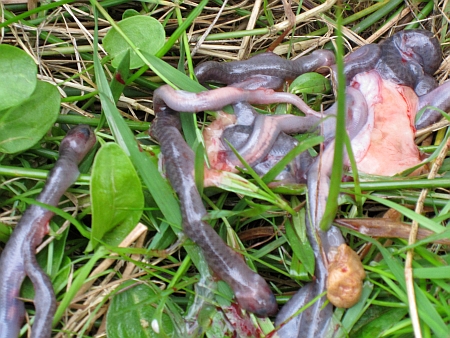
| HOME |
| PROJECT DETAILS |
| PROJECT ADMINSTRATION |
| JOINT RAPTOR STUDY |
| THE MOOR |
| THE GROUSE |
| THE RAPTORS |
| OTHER WILDLIFE |
| DIVERSIONARY FEEDING |
| GAMEKEEPING |
| WILDLIFE SURVEYS |
| NEWS |
| CONTACT |
| PHOTO GALLERY |
Previous Diaries
| Simon Lester's gamekeeping diary |
August 2011 AUGUST has seen quite a bit of activity. Our spraying of Molinia dominated moorland, plus beetled areas of heather, has continued, albeit interrupted by the continuing unsettled weather. Getting a double-wheeled tractor stuck is no mean feat, but getting it out again is even more interesting. So far, we have sprayed off approximately 260 hectares in the first stage of our heather restoration programme. It should be dead and ready to burn in September, if we get the out of season burning license and if the weather improves. Much to my relief, the young heather that was beetled on the southern end of the moor has almost recovered. It’s good to see so much flowering heather after the heather beetle attacks of the past two years which rendered much of the moor a dull brown colour, when it should have been purple. Two years ago, a chap rang me to ask whether he could put his bees out on the hill and I had to tell him that there wouldn’t be much point as there were no flowers. He didn’t ring this year, but there are a lot of wild bees making the most of it. One of the areas that we have sprayed off is called the Honey Spots. Historically, this was local peoples’ favourite spot in which to put out their beehives. Hopefully, the work we’re doing to restore the heather in the area will enable a new generation of apiarists to harvest honey off the hill once more. The caterpillars of the wide variety of moths that we see at night are now very obvious, especially the hairy fox moth and the brightly-coloured emperor moth caterpillar in their final stage before pupation in their silken cocoons. But the highlight has been the elephant hawk, whose giant caterpillar stares at you with false eyes while giving the impression of waving its elephant’s trunk. Young stoats, weasels and foxes are starting their big runaround, splitting up from family groups, looking for territories of their own, no doubt moving into territories that we’ve kept clear during spring and summer. The hen harriers have also begun to spread their wings; the five young that I was putting out diversionary food for have now disappeared. The cock from that nest that was fitted with a satellite tag is still local, but the two hens have moved north. There have been plenty of other raptor sightings as well. While out lamping one night in August, I saw at least 12 owls: one tawny, two barn owls and nine short eared owls all drying off on the road at various locations along my route. I also saw a buzzard eating an adder, which took off clutching its prey as I approached. When I took a closer look at the spot where he’d been enjoying his meal, I noticed several new-born tiny snakes, including one that had just started moving, still wrapped in its protective membrane.
|

